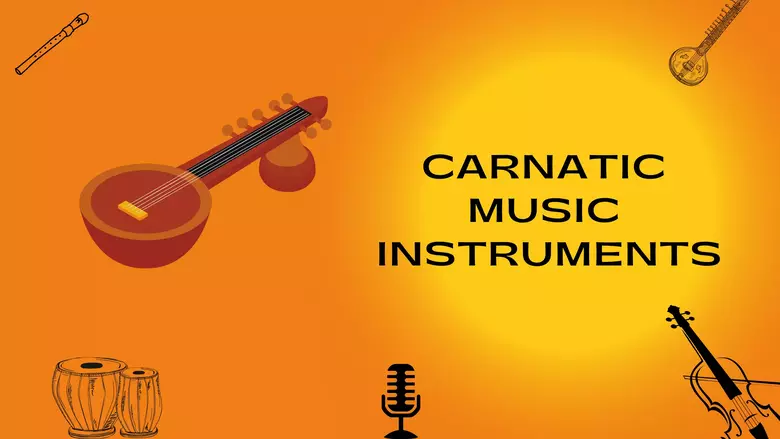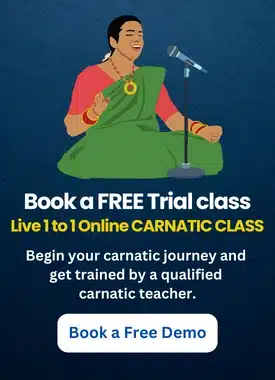Exploring the Universe of Carnatic Music Instruments, a mesmerizing musical tradition originating from India encompasses a wide range of instruments that contribute to its captivating and enchanting melodies. From instruments played with a bow or plucked strings to wind instruments and percussion these musical companions play a role, in music performances. In this blog post we will take a dive into some of these instruments and the accomplished artists who have mastered them.
1. Bowed Strings
1.1. Violin
The violin holds a place in the world of music as it produces deeply moving and soulful melodies. While its origins can be traced back to century Italy it has undergone adaptations and refinements to suit styles of music. Eminent Carnatic violinists such as Lalgudi Gopala Iyer Jayaraman have made contributions to this genre.
2. Plucked Strings
2.1 Veena
The veena, available in designs is a pear shaped lute that carries historical significance within the realm of Carnatic music. Karaikudi Sambasiva Iyer is one among the veena players who have made their mark on the world of music.
2.2 Guitar
Carnatic guitar stands out from its counterparts by infusing a twist into Carnatic compositions. Musicians like R. Prasanna, widely known as Guitar Prasanna have pioneered the fusion of guitar, with the world of music.
3. Wind Instruments
3.1 Venu
The Venu, a flute made of bamboo holds significance in the world of South Indian Carnatic music. Renowned artists, like Palladam Sanjiva Rao have showcased their talent and mastery of this flute.
3.2 Nadaswaram
The Nadaswaram, a reed instrument has a place in South Indian culture and is often heard during Hindu weddings and temple rituals. TNR (Thirumarugal Natesapillai Rajarathinam Pillai) a celebrated maestro of the nadaswaram and a prominent figure in music has left a mark on the legacy of this instrument.
4. Percussions
4.1 Mridangam
The mridangam, a percussion instrument rooted in music plays a role in creating captivating rhythms and beats. It is frequently accompanied by instruments such as the ghatam and kanjira to create compositions. The Mridangamela festival, conceptualized by Korambu Subrahmanian Namboodiri continues to nurture the traditions associated with this drumming art form.
4.2 Ghaṭam
Crafted from clay the ghatam is a percussion instrument widely used across India. Vikku Vinayakram, hailed as the God of ghatams due to his expertise with this instrument has gained acclaim for his contributions, to its mastery.
4.3 Kanjira
Introduced by Manpoondia Pillai the kanjira is a circular frame drum that beautifully complements the mridangam in music performances.
Govinda Rao Harishankar, a player of the kanjira has been. Honored with the prestigious Sangeet Natak Akademi Award, for his exceptional skills and contributions to this art form. The thavil, a drum percussion instrument with a barrel shape holds great significance in Indian music traditions. Valayapatti A. R. Subramaniam is a player who has mastered this instrument.
Another noteworthy instrument is the idakka, which resembles an hourglass shaped drum. Although it may not be as widely known the idakka plays a role in traditions and classical dance performances such as Kathakali. Tripunithura Krishnadas is a respected idakka player renowned for his expertise.
In conclusion Carnatic music instruments add to the beauty and intricacy of this genre with their history and unique sounds. Whether you are a musician exploring these instruments or simply someone interested, in delving into the world of music there are resources available to help you embark on an enchanting journey. You can visit our Music Master stores. Enroll in Music Master classes to begin your exploration of the captivating realm of Carnatic music.
Related blog: Musical Instrument Names





































